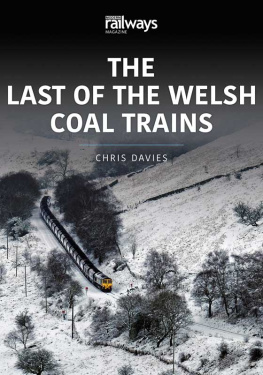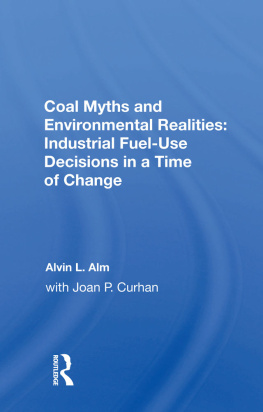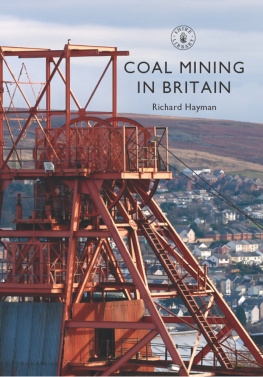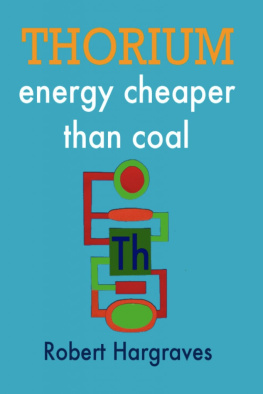Title page image: A view from the lineside, looking north along the Taff Bargoed Valley on 18 May 2018. Class 66/5 No. 66538 approaches the village of Bedlinog on the 14:00 (6C93) to Port Talbot Grange with around 1,500 tonnes of coal for Tata steel works. The coal will be converted into coke for smelting iron ore.
Contents page image: The final destination! On 11 November 2016, Class 66/5 No. 66519 makes its way past the vast stockpile of coal at Aberthaw B power station to discharge its load of coal brought in from Avonmouth on the 6B68.
Published by Key Books
An imprint of Key Publishing Ltd
PO Box 100
Stamford
Lincs PE19 1XQ
www.keypublishing.com
The right of Chris Davies to be identified as the author of this book has been asserted in accordance with the Copyright, Designs and Patents Act 1988 Sections 77 and 78.
Copyright Chris Davies, 2020
ISBN 9781913295738
ePub e-book ISBN 9781802820539
All rights reserved. Reproduction in whole or in part in any form whatsoever or by any means is strictly prohibited without the prior permission of the Publisher.
Typeset by SJmagic DESIGN SERVICES, India.
Contents
Introduction
I recall seeing MGR coal trains hauled by Class 37 locomotives heading for Aberthaw power station passing through Llanishen, Cardiff Queen Street and Cardiff Central stations back in the 1980s when, having just graduated from university, I lived in Lisvane in Cardiff with my parents, but I just took them for granted. Later, when I was on leave in the mid-1990s, I visited Barry station which made a big impression on me. It had an old-fashioned, calm feel to it, replete with semaphore signals, including an impressive three-arm gantry semaphore at one end of platform 2 and a signal box at the other. Add to that the Class 37 locomotives stabled at the Barry wagon repair shop on the other side of the platform and I couldnt get enough of it! Then, the innermost arm of the GWR lower quadrant gantry signal dropped down to show a clear line to Aberthaw, so I knew a train was coming, and the peace was shattered by the thundering roar of two Class 37s passing through the station, hauling a coal train to Aberthaw. I had no idea where the train had come from, other than somewhere in the Valleys, but wish now I had had the common sense to return with a camera, but I never did until many years later. Hopefully, I have made up for the deficit, even though the coal trains are no longer hauled by the stalwart Class 37s.
I have been interested in railways since I was a little boy and am old enough to just about remember the last of the steam engines in action, mainly shunting at Barry in South Wales. Whilst I have long been a keen photographer, it is only this past few years, now that I am semi-retired, having spent many years overseas with my career as a geologist, that I have started photographing railways.
I thought a good place to start would be Barry. Alas, the 37s had long gone, but coal trains were still running on a regular basis to Aberthaw. This was in 2013, when one could still see seven or more trains a day bringing in coal from Onllwyn, Cwmbargoed, Tower, Avonmouth and even from as far away as Scotland. Porthkerry Viaduct was a real favourite of mine (and still is), but then I started going further afield, making visits to Cwmbargoed, Tower, Onllwyn, Pontypridd and to Pantyffynnon to record the trains and the last remnants of coal mining in South Wales.
I soon realised the days of coal trains on the rail network were numbered as green energy policies, which included the phase out of all the UKs coal-fired power stations by 2025, were implemented to reduce emissions as a consequence of climate change. I think its fair to say that just a few years ago, railway photographers took coal trains for granted as they were so common on the network. How that has changed!
With this in mind, I set about recording the trains in as many photogenic locations as I could find in South Wales, over a period of around six years from late 2013 to early 2020. For over a century, coal has been mined in South Wales and then despatched by rail for domestic consumption, and it is one of the last places in the UK where this still takes place. This spurred me on to keep taking shots before its all confined to the history books.
With the scarcity of the coal freight (one or two trains a day from the mine sites) and our inclement weather, it has been a challenge, but a task that has kept me motivated. Some of the locations featured have been visited many times to achieve the ideal lighting conditions. Its not just the trains that interest me, I am also keen on capturing the environment the train is in to put the shots in context geographically, to hopefully imbue a Welsh feel.
One of my favourite spots is the remote outpost of Cwmbargoed, near Merthyr Tydfil. With its bleak, open, desolate countryside, there are some excellent photographic opportunities. It has a charm all of its own and its enthralling to see how the environment changes over the seasons. One of my favourite times to visit is the autumn when the russet-brown bracken dominates the Taff Bargoed Valley. Equally, winter views can also be special when the snow-clad hills are punctuated by a red train departing or going to the washery, though driving in such conditions is somewhat nail biting! The steep climb the line takes along the valley can also make for some really impressive photography in the unspoiled landscape just south of the washery.
The ever-changing inclement weather conditions, however, can pose challenges for the ardent railway photographer. Cwmbargoed seems to have its own microclimate where one moment the landscape can be bathed in sunlight, and the next it will disappear completely when moving clouds obscure the sun, shadowing the landscape. It can be frustrating, but with a little patience, extremely rewarding too. I often find the best time to go out is during periods of showers as they can lead to some great lighting conditions and stunning skyscapes. One bonus is that the open countryside provides numerous locations to photograph the trains, a rare scenario on the network nowadays as prolific vegetation frequently reduces photographic opportunities. Shots of the same train travelling up or down the valley can be gained from the same vantage point, but fitness is required to get to some of these!
Onllwyn in the Dulais Valley is in some ways like Cwmbargoed. It too has a strong sense of openness and remoteness, and again affords several views of a single train from one vantage point, particularly when a train is loading up or discharging coal at the wash plant. It is an ideal location, given the paucity of trains.
The Vale of Glamorgan line, which leads to Aberthaw power station and is also used for the trains to Tata steel works in Port Talbot, is also another wonderful location to visit. Porthkerry Viaduct, comprising some 16 arches, between 45 and 50 feet (15 metres) in width, and rising to a height of 110 feet (33 metres), is a spectacular feat of engineering which I never tire of photographing. Again, it is fascinating to capture the changing mood over the seasons, an easy feat for me as I live nearby. I particularly like the early morning winter sunrises illuminating the arches, or capturing the last light catching the arches on a balmy summer evening. I am glad I made the most of the trains crossing the viaduct when they were running on a regular basis a few years ago. Its difficult to replicate such scenes today due to substantially less traffic running as a result of the closure of Aberthaw power station.

















